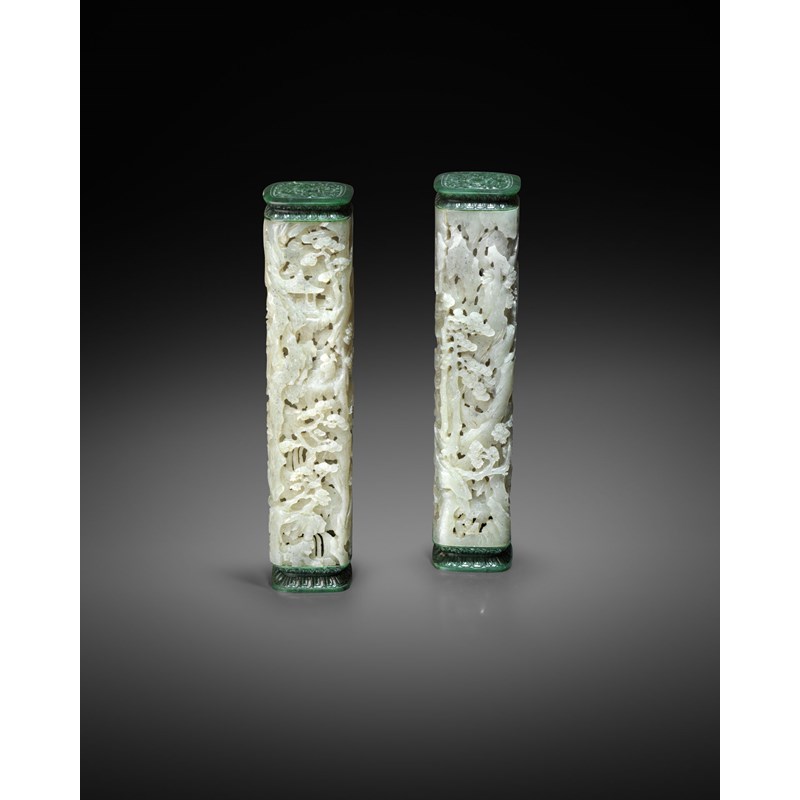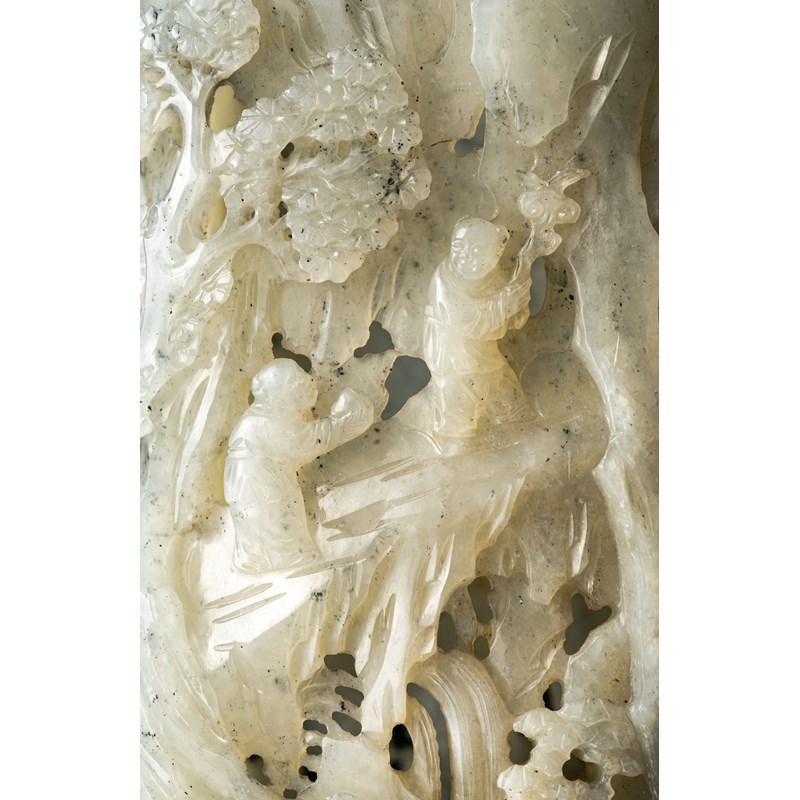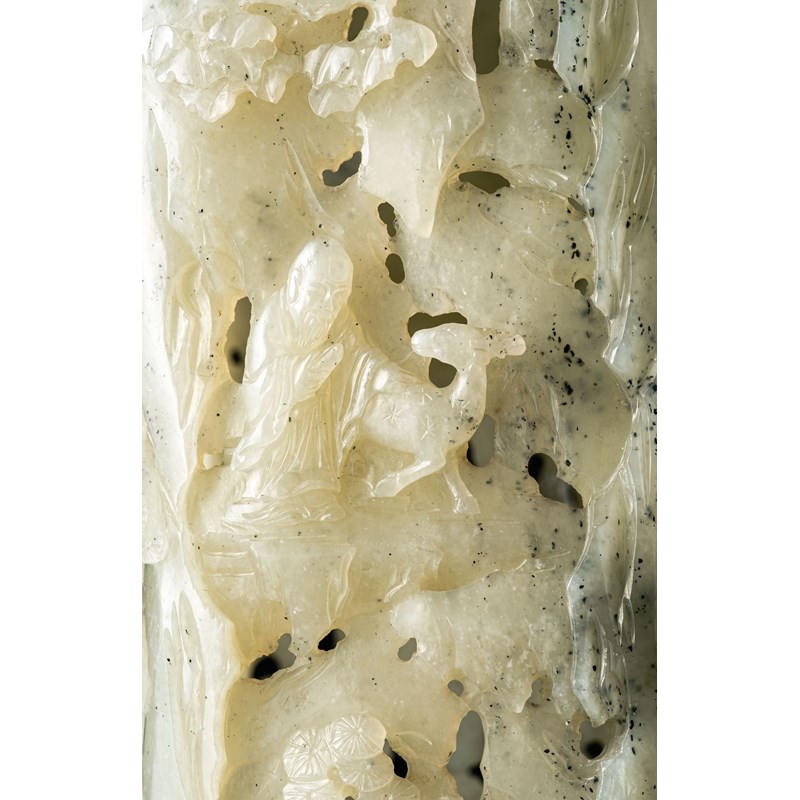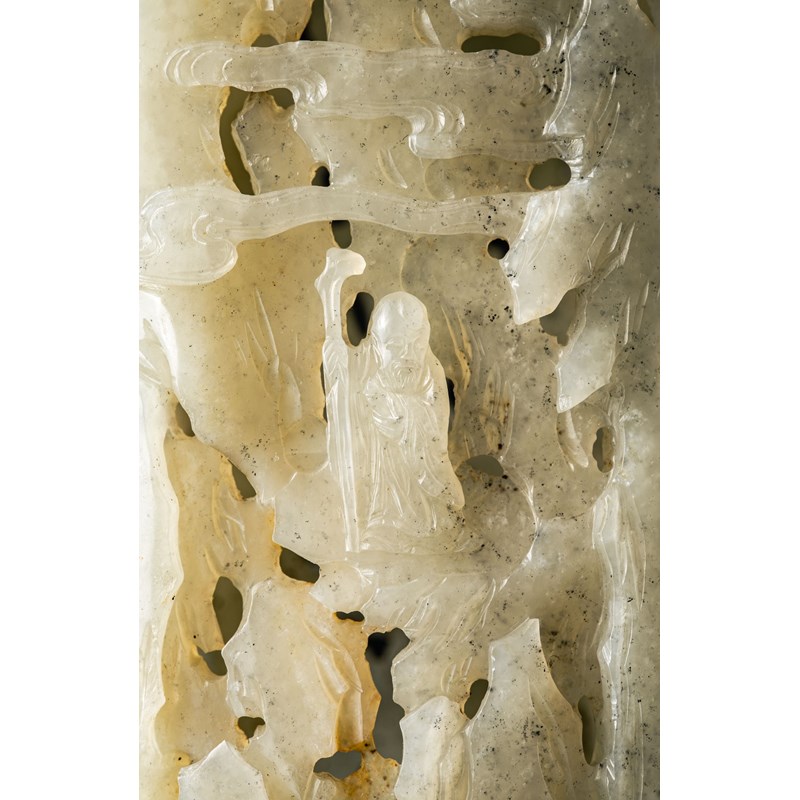The Lawrence Jade Collection - 14 Nov 2023
A PAIR OF FINE CHINESE PALE CELADON JADE INCENSE HOLDERS
A PAIR OF FINE CHINESE PALE CELADON JADE INCENSE HOLDERS
QIANLONG 1736-95
Each with a square-section body, worked in relief and openwork with figures in continuous mountain landscapes, the depicted scenes including two young boys walking along a path, three scholars looking at a painting, an old man and his young attendant beneath a pine tree, and Shoulao accompanied by his deer, with dark speckles dispersed through the pale stone, the waisted spinach-green tops and bases carved with bands of lappets, the ends pierced with flowers surrounded by scrolling foliage, 28.2cm. (2)
Provenance: formerly the collection of Hugh S Whitaker; and then the Lawrence Collection of jades and hardstone carvings, purchased from Spink & Son prior to 1959.
Whitaker was a collector of Oriental art in the early 20th century, and many items from his collection are now in major western museums, including the British Museum and the Victoria & Albert Museum. Whitaker is recorded in the Sparks' ledger books between 1914 and 1938 as a buyer.
The incense holder is also known as a perfumier. The incense is placed inside the perfumier and the smoke emerges through the holes while the lighted incense fragrances the room. Perfumiers were popular in the Ming and Qing dynasties, when they were usually made of carved bamboo. They were sought after by the literati class who liked to place them on their desks. Incense holders made of more expensive materials such as jade were usually created for the Imperial Palace.
Such pictorial representations are clearly based on traditional landscape paintings in ink. The subjects express belief in longevity and immortality. In Chinese religion, Immortals are always associated with mountains and hills. The carving is of exceptional quality. One can imagine the incense smoke wafting through the pierced holes, like clouds moving through high mountains, bringing these scenes to life. In the early Qing period, such landscape art was practised by literati artists and was much favoured at the Imperial Court, in particular by the Yongzheng and Qianlong Emperors. Here, the jade carver successfully crafted scenes from two-dimensional landscape paintings into this three-dimensional incense burner, creating a masterpiece that can equal any other great works of art.
Cf. Compendium of Collections in the Palace Museum, Jade, vol.8, p.239, no.198, p.242, no.201 and p.243, no.202 for comparable pairs of incense holders in pale celadon jade; see also The Complete Collection of Treasures of the Palace Museum, Jadeware (III), pp.46-49, nos.36-38 for single cylindrical perfumiers with similar decoration; see also R Kleiner, Chinese Jades from the Collection of Alan and Simone Hartman, p.118, no.98 for a related example; see also Asian Art I, 17th November 2010, lot 335 for a comparable incense holder with spinach-green jade fittings previously sold in these rooms.
清乾隆 青灰玉鏤雕香薰 一對
來源:Hugh S Whitaker舊藏,勞倫斯珍藏玉石,1959年前購於Spink & Son。








 Live online bidding is available via our own
Live online bidding is available via our own